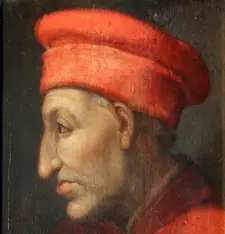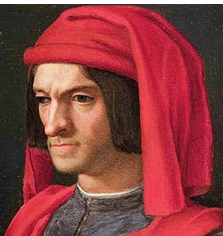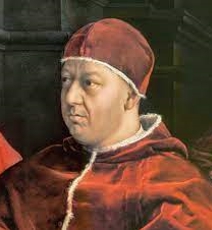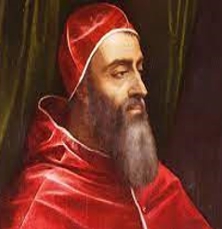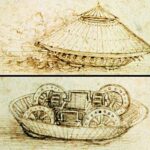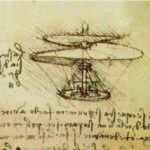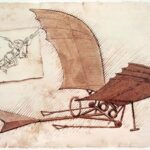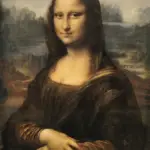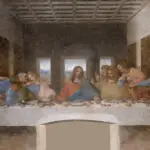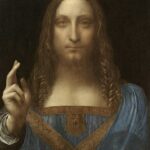The Medici Family
Before we dive into the fascinating world of the Medici, imagine yourself in the heart of Italy during the Renaissance, a period of extraordinary cultural and scientific flourishing. At the centre of this golden era stands the prominent Medici family, also known as the House of Medici.
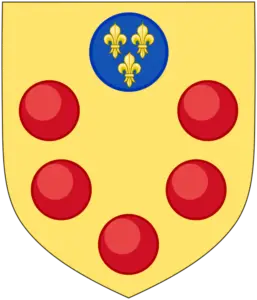
Coat of arms of the House of Medici
The Medici family history is a captivating tale of power, wealth, and patronage. Originating from the Tuscan region, the family first gained their wealth and power through their banking activities. Under the leadership of figures like Cosimo de Medici and his grandson, Lorenzo de Medici, also known as Medici the Magnificent, the Medici dynasty expanded to become one of the most influential in European history.
The de Medici family were not merely bankers, but keen patrons of the arts and sciences, fostering a cultural revolution that still resonates today. They commissioned and collected art, supporting a number of renowned artists including Leonardo da Vinci and Michelangelo, thus securing their place in the annals of cultural history.
The Medici Dynasty
Overview of the Medici Family History
As we pull back the curtain on the Medici family history, we’re transported to 14th century Florence, Italy. It was during this time that the Medici family began their ascent to power, a journey that would intertwine their fate with the history of Italy and Europe for centuries to come.
The House of Medici started modestly. They were merchants and bankers in the city of Florence, which was the epicentre of the Italian Renaissance. But the tides turned in their favour with the emergence of the charismatic Giovanni di Bicci de’ Medici, who transformed the family’s standing from successful merchants to influential bankers, setting the stage for the Medici to become one of the most powerful families in Italy.
Highlighting the Banking Empire They Created
From this modest beginning, the Medici would go on to build a banking empire that was unparalleled at the time. The Medici Bank, as it came to be known, was at the heart of their wealth and influence. They extended their banking network across Europe, setting up branches in key cities like Rome, Venice, and even as far as London. Their financial activities were diverse, ranging from lending money to monarchs to funding international trade.
At the helm of this financial empire, Cosimo de Medici demonstrated remarkable acumen. He was a pioneer in using his wealth as a tool for political influence, extending loans to the cash-strapped rulers of Europe and gaining their loyalty in the process.
Under the reign of Lorenzo de Medici, known as Medici the Magnificent, the family’s fortunes soared to new heights. The Medici Bank had become the most prosperous and respected in Europe, bankrolling everything from wars to the construction of cathedrals.
This incredible banking empire solidified the Medici dynasty and established them as de facto rulers of the Republic of Florence. Yet, their influence wasn’t limited to the financial world. Their patronage of arts and culture shaped the Renaissance, leaving a lasting legacy in the world of art, architecture, and beyond.
Influence of the Medici on the Renaissance
The Medici were far more than a wealthy banking family; their influence extended well into the arts and sciences, making them the beating heart of the Renaissance. They were masters in the truest sense, not only as savvy financial brokers, but as cultivated patrons of culture and knowledge.
Medici’s Patronage and the Flourishing of Art and Science
The Medici recognized the power of art and intellectual pursuits, making significant contributions that transformed Florence into the artistic and cultural hub of the era. Their extensive collection of Medici paintings became a symbol of their love for the arts and their immense wealth.
The Medici and Leonardo Da Vinci
One of the most profound relationships the Medici fostered was with the polymath Leonardo Da Vinci. The family’s patronage played a significant role in Leonardo’s life and career, giving him the freedom to pursue his wide array of interests. More can be learned about this relationship in our in-depth look at the life of Leonardo on our Leonardo Da Vinci biography page.
Patronage of Prominent Artists
The Medici’s support wasn’t limited to Leonardo da Vinci. They were patrons to a dazzling array of artists who have left an indelible mark on the world. This includes Michelangelo, whose David can still be seen standing tall in Florence, and Sandro Botticelli, whose iconic works like ‘The Birth of Venus’ were made possible through Medici patronage. Raphael, another artist funded by the Medici family, created masterpieces that still captivate audiences today. The Medici’s influence on these artists and their creations shaped the course of art history, truly making them the Medici masters of Florence.
The Contribution of Cosimo de Medici
Cosimo de Medici, the elder of the family, was a visionary who saw the value in supporting the arts and sciences. He established the Medici Library, which housed a vast collection of manuscripts and was a cornerstone of the Renaissance humanist movement. He also commissioned the construction of majestic buildings that still stand as testament to the family’s cultural impact.
The Impact of Lorenzo de Medici, The Medici the Magnificent
Lorenzo Medici took his grandfather’s legacy a step further. Known as the Magnificent, Lorenzo was not only a shrewd statesman but a poet and a scholar who surrounded himself with artists, writers, and philosophers. His court was a vibrant hub of cultural and intellectual activity, making significant contributions to the development of the Italian language and literature. Under his patronage, Florence flourished, firmly establishing its reputation as the cradle of the Renaissance.
In the end, it was the Medici’s commitment to arts and culture that solidified their legacy. Their patronage allowed for an unprecedented flourishing of creativity, intellectual thought, and artistic mastery, contributing to the cultural wealth of not only Florence but the entire world. Through their actions, they embodied the essence of the Renaissance spirit, forever entwining their name with this extraordinary period of human history.
The Medici Popes
Continuing to thread their influence through the rich tapestry of history, the Medici family extended their reach even to the hallowed halls of the Vatican. The Papacy, the spiritual and political hub of the Catholic world, saw two of its Popes hail from the illustrious Medici family.
Pope Leo X (Giovanni de’ Medici)
The first Medici Pope, Leo X, was born Giovanni de’ Medici. His ascent to the papal throne in 1513 signified the immense power the Medici wielded not just in Florence, but also in the broader landscape of Italian politics. Known for his love of the arts, Leo X’s reign continued the family tradition of patronage, supporting artists such as Raphael and Michelangelo. This era, marked by a profound flourishing of art and culture, came to be known as the High Renaissance.
Pope Clement VII (Giulio de’ Medici)
The second Medici Pope, Clement VII, was born Giulio de’ Medici. He ascended to the papacy in 1523, a decade after Leo X. His reign was fraught with political turmoil and conflict, notably the Sack of Rome in 1527. However, despite these challenges, he remained a dedicated patron of the arts and continued to uphold the family’s commitment to cultural advancement.
Through these two figures, the Medici cemented their influence within the highest echelons of religious and political power, affirming their status as one of the most significant families in history. The Medici Popes are yet another chapter in the Medici history, underlining their broad and lasting impact on various spheres of society.
The Medici Family in the 21st Century
If you’re curious about the Medici family today, you’re not alone. Many wonder if there are any descendants of the influential family still around. To answer that, let’s delve into the winding narrative of the Medici lineage.
Are There Any Medici Left Today?
The last Medici who can be traced back directly to the original lineage was Anna Maria Luisa de’ Medici, who passed away in 1743. After her, the direct lineage of the Medici family officially ended. However, descendants of the Medici do exist today, but they come from indirect lineage. These are descendants from families that have intermarried with the Medici over the centuries. They might not carry the Medici name, but they carry Medici blood nonetheless.
The Current Medici Heir
Due to the nature of the descendants being indirect, determining a single Medici heir today is challenging. But it’s interesting to note that some individuals claim to be descendants of the Medici and have even used the famous family name. One such person is Prince Ottaviano de’ Medici di Toscana, who, in 2021, represented a group claiming to be the rightful heirs of the Medici family. However, the accuracy of such claims is a topic of much debate among historians.
Lasting Legacies of the Medici Family
The Final Female Medici: Anna Maria Luisa de’ Medici
The final scion of the family, Anna Maria Luisa de’ Medici, played a vital role in preserving the Medici legacy. She bequeathed the family’s vast collection of art and rare manuscripts to the city of Florence, ensuring its preservation. This singular act cemented the city’s reputation as a cultural hub and keeps the spirit of the Medici family alive even today.
The Ongoing Influence of the Medici Family Today
From politics to arts, the influence of the Medici family continues to resonate in modern society. The cities of Florence and Rome, teeming with artworks, architectural marvels, and historical landmarks funded by the Medici, bear testament to the family’s lasting impact. Their story remains a captivating narrative of power, influence, and patronage that continues to inspire and fascinate us in the 21st century.
Wealth of the Medici Family in Context
In order to fully appreciate the magnitude of the Medici family’s wealth, it’s worth placing it in context alongside the fortunes of other illustrious Italian families throughout history.
Comparing the Medici Fortune
The Medici were synonymous with opulence in their prime, having amassed a staggering wealth through their banking empire. Indeed, the Medici name is often the first that comes to mind when talking about the richest families in Italian history.
However, they weren’t the only ones sitting on a goldmine. Italy has been home to a number of wealthy and influential families. The Borgia, Sforza, and Visconti families, for instance, were all renowned for their wealth and power during different periods of history.
Even so, what set the Medici family apart was not just the scale of their wealth but also how they utilized it. The Medicis were savvy investors in culture and knowledge. Their patronage of the arts left behind a cultural and artistic legacy that’s arguably unmatched to this day.
Their wealth was also instrumental in politics. The Medici produced four Popes and two Queens of France, influencing not just the course of Italian history but the broader European stage.
Conclusion
The legacy of the Medici family is as rich and intricate as a Renaissance tapestry, which is fitting considering their crucial role in propelling this golden age of human history. With their pioneering influence in banking and finance, coupled with their unparalleled patronage of the arts and sciences, they indelibly shaped the cultural and political landscape of Europe.
From Cosimo de Medici, who laid the foundations of the family’s wealth, to Lorenzo de Medici, fondly known as Medici the Magnificent, who steered Florence into a flourishing era of peace and artistic blossoming, the dynasty has left a lasting imprint.
Beyond the borders of Florence, they cemented their influence through the Medici popes, extending their sphere to the highest echelons of religious power. Their support and patronage saw the birth of timeless masterpieces by da Vinci, Michelangelo, and Botticelli, all of whom are cornerstones of the Renaissance.
In the modern context, while the Medici family today may not wield the same financial and political clout, their contribution to history remains palpable. They serve as a testament to the indelible mark that one family can leave on the world when wealth is combined with a fervent dedication to the advancement of art, culture, and knowledge.
